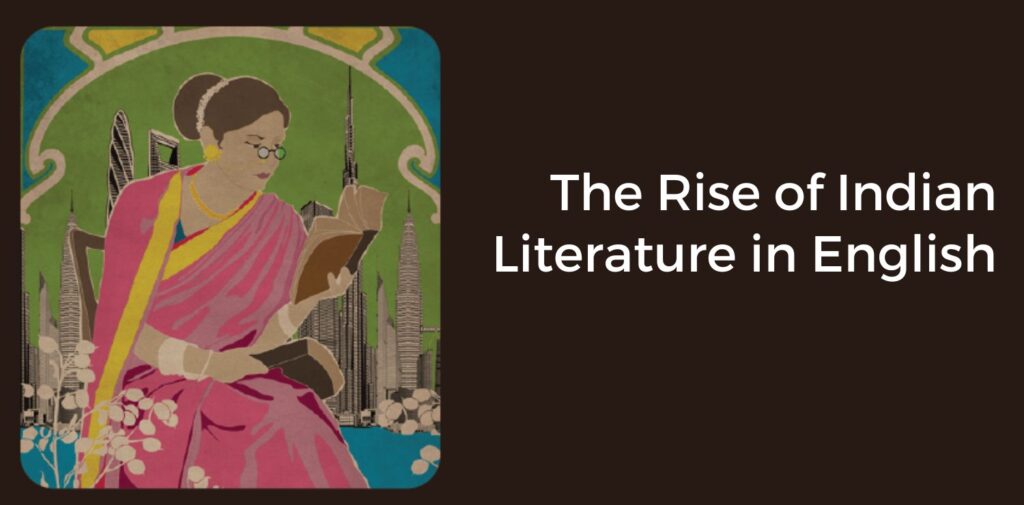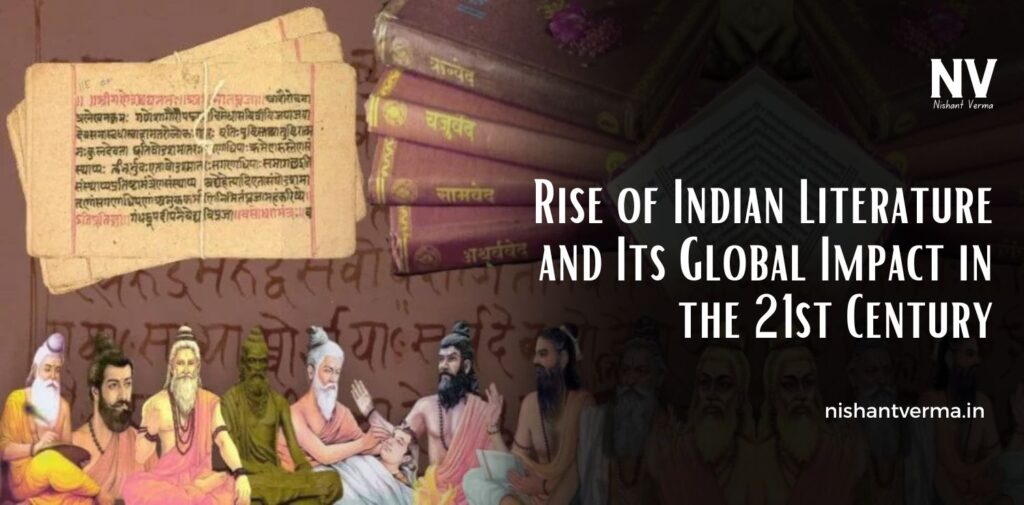Indian literature, with its rich diversity and centuries-old traditions, has undergone remarkable transformations in the 21st century. From ancient texts written in Sanskrit, Tamil, and other regional languages to the contemporary works in English and Indian languages, Indian literature has garnered global recognition. The 21st century has brought a new wave of Indian authors who have not only revolutionized the literary scene within the country but have also made a significant impact on the global stage. This article explores how Rise of Indian Literature has evolved and how it continues to shape global literary trends in the present century.
The Rise of Indian Literature in English
While Indian literature in regional languages has always had its charm, the global recognition of Indian literature in the 21st century owes much to the rise of English-language authors. English, a legacy of British colonialism, became a bridge for Indian writers to connect with a global audience. However, it was in the 21st century that Indian writers in English began to gain widespread international recognition.
Authors such as Arundhati Roy, who won the Booker Prize for The God of Small Things, and Kiran Desai, whose The Inheritance of Loss won the Booker Prize in 2006, played crucial roles in bringing Indian literature to the global stage. These authors’ works explore themes that resonate with global audiences, such as identity, migration, family dynamics, and socio-political issues. Furthermore, Indian writers have used English as a tool to express the complexities of Indian society in a way that is accessible to readers worldwide.
The success of authors like Chetan Bhagat, Vikram Seth, and Jhumpa Lahiri further strengthened the appeal of Indian literature. With their novels reaching millions of readers globally, they have made Indian stories and perspectives a prominent part of global literary conversations. Indian literature in English has become a genre that reflects the unique blend of Indian culture with global experiences.

Emergence of Diverse Voices and Regional Literature
In the 21st century, Indian literature has experienced a significant shift toward diversity in both themes and voices. While English writers continue to thrive, regional literature has also gained prominence. Regional writers writing in languages such as Hindi, Bengali, Malayalam, Tamil, and Kannada have contributed to a more inclusive literary scene. Their works are being translated into English and other languages, making them accessible to global readers.
One key feature of 21st-century Indian literature is its exploration of previously overlooked or marginalized voices. Writers from different parts of India, including rural areas and indigenous communities, are telling their own stories. For instance, writers like Perumal Murugan, who writes in Tamil, and Benyamin, a popular Malayalam writer, have garnered attention for their exploration of social issues, local traditions, and human emotions. Their works reflect the complexities of Indian society and the evolving dynamics between tradition and modernity.
In addition, Indian literature is increasingly exploring themes of caste, class, gender, and the environment. Writers are addressing the struggles of lower-caste communities, the experiences of women in a patriarchal society, and the challenges of globalization. This diversity of voices and themes has helped Indian literature expand its reach to a broader, global audience that is keen on understanding the nuances of Indian life.

Impact of Technology and the Digital Age
The 21st century has been marked by the rapid rise of digital platforms, and this has significantly impacted Indian literature. The internet has made literature more accessible than ever before, allowing Indian authors to reach readers across the globe without the traditional barriers of publishing. Online platforms such as blogs, e-books, and self-publishing websites have given new voices a chance to emerge, enabling young writers to share their stories with a wider audience.
Technology has also made it easier for Indian literature to be translated and published in multiple languages. Digital platforms have helped regional authors get their works translated into English and other global languages, increasing the visibility of Indian writers worldwide. This democratization of literature has made Indian voices more diverse, representing various regions, cultures, and languages.
The popularity of social media also allows authors to connect directly with their readers, creating a more personal and interactive literary experience. Platforms like Twitter, Instagram, and YouTube have been used by Indian writers to promote their works and engage in discussions on literature, culture, and social issues. This direct engagement with readers has helped build a global community of Indian literature enthusiasts, further solidifying its place in the global literary landscape.
Themes of Identity, Globalization, and Migration
One of the most significant themes that have emerged in Indian literature in the 21st century is the exploration of identity, especially in the context of globalization and migration. As India became more connected to the global economy, many writers began addressing issues related to the global movement of people, ideas, and cultures. Immigration, the diaspora experience, and the negotiation of multiple identities have become key themes in contemporary Indian literature.
Books like The Namesake by Jhumpa Lahiri and The White Tiger by Aravind Adiga examine the complexities of identity in a globalized world. These novels explore the tension between traditional Indian values and the pressures of living in a foreign culture. They also highlight the challenges faced by Indian immigrants in adjusting to new countries while retaining their cultural heritage.
Similarly, authors like Amitav Ghosh and Shashi Tharoor explore the effects of globalization on Indian society. Their works examine how the forces of global capitalism and the internet are changing the way people live, work, and think. This theme of identity in a globalized world is not only relevant to the Indian context but resonates with readers from various parts of the world who are experiencing similar shifts in their own societies.
Awards, Recognition, and Global Influence
Indian literature has achieved greater recognition in global literary circles over the past two decades. The Booker Prize, which has long been a prestigious platform for international authors, has seen Indian authors winning or being shortlisted regularly. In addition to Arundhati Roy and Kiran Desai, authors like Aravind Adiga (winner of the 2008 Booker Prize for The White Tiger) and Geetanjali Shree (shortlisted for the 2022 Booker Prize for Tomb of Sand) have helped solidify India’s position as a dominant force in the global literary world.
Moreover, Indian literature has gained influence in other areas, such as film and television. Many Indian novels have been adapted into successful films, further increasing their reach. For instance, The White Tiger was adapted into a Netflix film, and Slumdog Millionaire, based on the novel Q & A by Vikas Swarup, won multiple Academy Awards. These adaptations have helped bring Indian stories to a broader, international audience, further elevating the country’s literary profile.
In addition, international literature festivals, like the Jaipur Literature Festival, have become significant platforms for global literary exchange, bringing together Indian writers and international literary figures. These festivals have contributed to the global recognition of Indian literature, allowing it to influence and be influenced by global literary trends.

The Future of Indian Literature
The future of Indian literature appears bright, with an increasing number of talented writers emerging from all corners of the country. While English-language literature will continue to thrive, the growth of regional languages and translations will ensure that Indian literature remains diverse and inclusive. Writers will likely continue to tackle issues of gender, caste, class, and the environment, as well as the complexities of living in an increasingly globalized world.
With the rise of digital platforms, new forms of storytelling, such as graphic novels, podcasts, and online short stories, are also emerging, opening up new avenues for Indian authors to explore. As Indian literature continues to evolve, it will likely see further integration with global literary trends, blending traditional themes with contemporary global concerns.
Conclusion
Indian literature in the 21st century has become a powerful voice on the global stage, with authors addressing a wide range of social, political, and cultural issues. Through the rise of Indian authors in English, the growing recognition of regional literature, and the use of digital platforms, Indian literature has made a significant impact on global literary trends. As it continues to evolve and adapt to the changing world, Indian literature will remain an essential and influential part of the global literary landscape, offering unique insights into the complexities of life in India and beyond.




